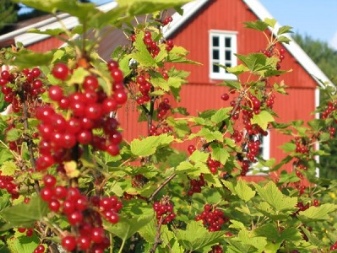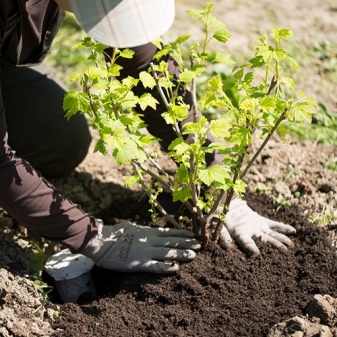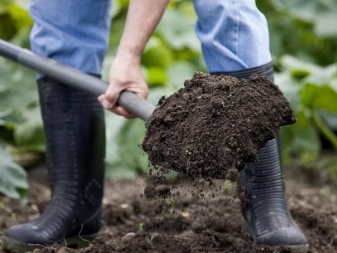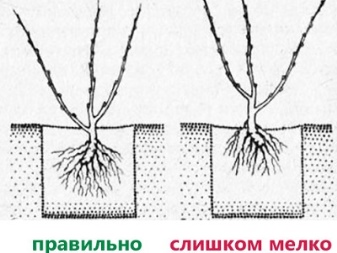When and how to transplant currants?

Novice gardeners often do not know that transplanting currant bushes has its own characteristics. It may seem that there is nothing difficult in this - he dug up the plant, transferred it to a new site, covered it with nutritious soil and watered it. However, everything is not so simple - we will tell you about all the transplanting rules in our article.


The need for a procedure
Currant bushes need replanting from time to time. There can be many reasons for this.
- When the plant has become old and needs rejuvenation.
- If the soil on the plantation is depleted, impoverished, and the plant lacks useful micro and macro elements.
- If a fence was erected nearby, the structure or fruit trees grew, which began to obscure the sun for the plantation.
- When the currant bush itself began to interfere with the full growth and development of neighboring plantations.
- If an adult bush has too many new shoots that need to be transplanted to a new site.


Timing
For transplanting currants, early spring, mid-autumn and summer are suitable. True, in the latter case, the root system of the seedlings must be closed. Transplanting bushes in autumn is considered the most effective. The work is carried out during the period when the bush completely threw off its foliage, went into a dormant stage, and the sap flow stopped. In the suburbs and the middle zone of our country, this time falls on the second or third decade of October. For areas located to the north, it is better to transplant in late September - early October. If you transplant the bush earlier, then the currants will enter the stage of active vegetation and throw out the buds. They will not withstand winter frosts - this weakens the plant and can even lead to its death.
If, after autumn transplanting, dry warm weather lasts for a long time, then young bushes should be abundantly irrigated. You can even create a real "swamp" under them. If it is very cold outside, then the bush will need shelter. It is best to take humus, mix with compost or fallen leaves and pour it into the trunk circle. One plant will require 2-3 buckets. Such a measure will create effective protection of an unrooted plant from frost, and in spring will provide nutritious feeding. In spring, the currants are transplanted in the second half of March, as soon as the snow cover has melted, and the average daily temperature is set at a positive mark.
However, if by this time the currants have already begun to grow, it is better to postpone the transplanting work in the fall. Otherwise, the bush may simply not take root in the new site.


Currants transplanted in autumn usually root well in winter and quickly adapt to a new site. Therefore, in the summer you can get a good harvest. The adaptation period of a berry plant transplanted in spring usually lasts longer. In this case, the plant will begin to bear fruit only after a season. When single flowers appear, they must be plucked so that the plant will put all its strength into rooting.
The situation is different with seedlings with a closed root system. They are allowed to be moved into open ground in any month, except for the winter period. For summer transplanting, the seedlings should be covered with mulch to retain moisture in the soil and then maintain frequent and abundant irrigation.Top dressing with such a plant will only be required for the next season, since all nutrients important for full growth and development are already laid in the planting hole.
Saplings obtained from cuttings are best planted in spring. For this, the material planted last spring is used. The plant at the age of 1 year looks like a full-fledged bush and has 2-3 strong shoots. Seedlings must be transplanted with a lump of earth - this will minimize injury to the rhizome and ensure high survival rate. All subsequent care consists in abundant irrigation throughout the spring, summer and early fall season.
It happens that gardeners buy a new plot or summer cottage in the summer. Then the need to transplant your favorite fruit crops arises in hot weather. In this case, you need to try to dig out bushes with the largest possible earthen clod, put in a bucket, basin or container for transportation, and then transplant to a new site.
During the first three days, the plant needs abundant moisture, at first the bush will need light shading from the scorching rays of the sun.

Preparation
Regardless of what reason caused the need to transplant a currant bush, preparatory work will include the preparation of a new site, the formation of a planting hole and the processing of the plant itself.


A place
A new land plot and a place for planting garden currants should be chosen responsibly. The fact is that each plant after transplanting experiences powerful stress, even if all the rules of agricultural technology were followed. If you choose the wrong site for the plantation, then the currants will weaken. This will significantly complicate its adaptation, and it will take several years to expect a rich harvest. All varieties of currants love bright sun, therefore they require well-lit areas. They should be away from large trees, tall fences and shade-prone country buildings. Lack of light leads to a decrease in productivity and a deterioration in the taste characteristics of berries. The only exceptions are the southern regions, where the weather is steadily hot in summer, and the sun burns - in such regions partial shade is suitable for currant plantings.
It is important to consider the groundwater level. If they are located high, such a place is not suitable for the culture. You should not grow currants in lowlands, where water constantly accumulates. However, even on a hill, she will also feel bad, there are constantly blowing winds, and moisture quickly evaporates. This plant is highly susceptible to fungal infections. Therefore, you should not plant a hearth crop next to other fruit and flower plants. To minimize the risk of injury, it is best not to plant any other crops near the bushes.
Best of all, currants take root in areas where corn, buckwheat, legumes, as well as potatoes or beets were previously grown. A land where many weeds grow and the roots of perennials are intertwined will not work for this plant. In such conditions, fungal infections and insects often appear.


Soil and pit
Before planting currant bushes, the ground must be well dug up, all weeds must be removed and the site must be cleared of debris... Landing pits are formed at a distance of 1-1.5 m from each other. For tall plants, the removal is made a little larger. Keeping a distance allows individual seedlings not to create shading, and in addition, eliminates the risk of infection with fungal and viral infections that have arisen on one of the plants.
The planting hole is formed at least 40 cm deep and 45-60 cm wide, depending on the development of the roots. The pit is filled with a soil mixture composed of turf, compost or humus with the addition of crushed ash. It is advisable to introduce some mineral fertilizers into the soil - usually potassium chloride or superphosphate is taken. Currant responds well to light nutrient soils with neutral pH and high aeration... The best option would be loam. When transplanting red currants, the bottom of the planting hole must be covered with drainage, and a little river sand must be added to the ground.
The pit is usually prepared 2-3 weeks before the transplant.


Bush
Special attention should be paid to the preparation of the transplanted plant itself.... All young shoots should be shortened by 1.5-2 times, and old ones should be cut to the root. After that, the bush is dug in a circle and carefully removed from the hole. This should be done with extreme caution, in no case should you drag by the shoots, as this can damage the roots. If you cannot extract the bush, you should continue digging it.


Technology
The most common question for gardeners associated with transplanting currants is to plant with a clod of earth, or is it better to shake the soil from the roots... If the plant is healthy, then the first option is better. In this case, you will need a piece of linen or hard polyethylene, as well as a basin. This will allow you to move the dug out currant bush without injuring its rhizome and shoots. As practice shows, adult bushes are most often transplanted; in this case, the risk of fungal diseases, rot or pest larvae in them cannot be excluded. In addition, the bushes are sometimes dug out in order to separate them for reproduction - in this case, the soil must be shaken off and the roots must be carefully examined for damage. All dry, rotten and insect-affected areas should be removed, and the roots should be kept in a weak solution of potassium permanganate for 15-20 minutes.
The prepared seedling is placed in the planting hole in the center, all lateral roots are carefully distributed and sprinkled with earth. In this case, the root collar should be 3-5 cm higher than the surface of the soil. In the process of filling the hole with a substrate, it is important to prevent the appearance of voids, since they greatly increase the likelihood of rot. To do this, the seedling should be shaken from time to time. After the hole is completely filled up, the earth is lightly tamped and watered.
For the first watering, you will need two buckets of settled warm water. It must be poured slowly so that the moisture is completely absorbed.


The nuances of transplanting different types
There are peculiarities when transplanting currants of various varieties... The fact is that fruit crops differ not only in the form of growth, shade and taste of berries. Certain plant species have their own requirements for land, care and environmental factors. For example, black currant is the most unpretentious crop. Any soil is suitable for planting it; it can be grown even on the northern side of the site. Experienced gardeners reap a good harvest even when the plantation is partially shaded.
Red currants make much more demands on the soil. Loose fertile substrates with good aeration parameters are suitable for her, a substrate with a high sand content will be ideal for her. When transplanting red currants, it is necessary to dig a deeper hole and provide a drainage layer, since the roots of this plant do not tolerate excess moisture, their resistance to fungal infections is extremely low.
In conclusion, we will give some recommendations on how to properly care for the newly transplanted currant. In the first days after moving currants to a new site, she needs special attention. It is important to ensure the unhindered penetration of air and moisture to the roots. To do this, loosening of the soil should be carried out - near the shrub itself, the soil is loosened to a depth of 4-6 cm, in the distance - by 10-15 m.

The first two weeks the plants are watered every other day. The soil should be saturated with moisture by 50-60 cm. On average, one bush should have 3 buckets of water.
If fertilizers were not added to the planting hole when transplanting currants, then after two weeks you need to feed the plant. To do this, you can take manure or bird droppings. The first is diluted with water in a ratio of 1 to 5, the second - 1 to 15.
When planting in autumn, the plant must be insulated for the winter in order to increase its frost resistance. To do this, the trunk circle is cleaned of plant debris and the ground is mulched with manure or peat, and then covered with spruce branches.
In open areas where cold winds often blow, it is better to collect the branches and tie them with a soft twine, this will prevent them from breaking. As soon as the first precipitation falls, a snowdrift is thrown around the bush. This will create effective heat protection for immature plants.
Transplanting different types of currants is a simple matter. Nevertheless, it is still necessary to adhere to the basic rules of agricultural technology. And then you can be sure - currants will answer you with gratitude and give you a bountiful harvest of tasty and juicy berries.














The comment was sent successfully.